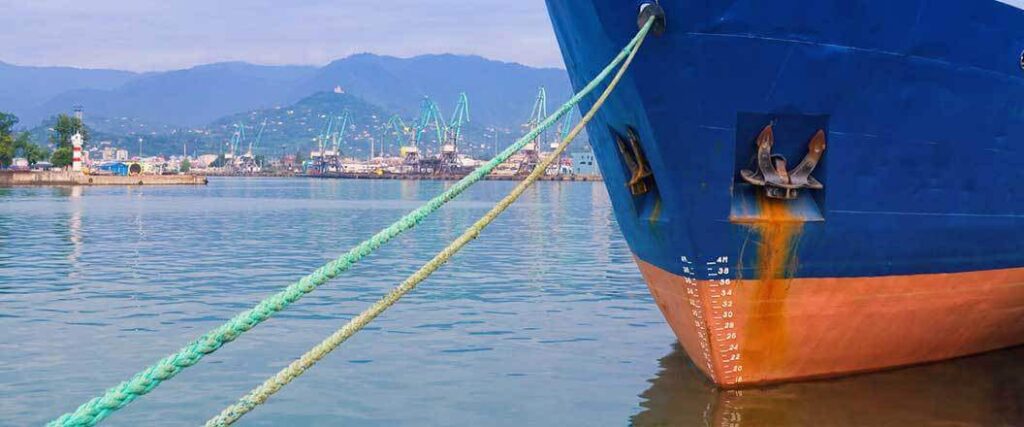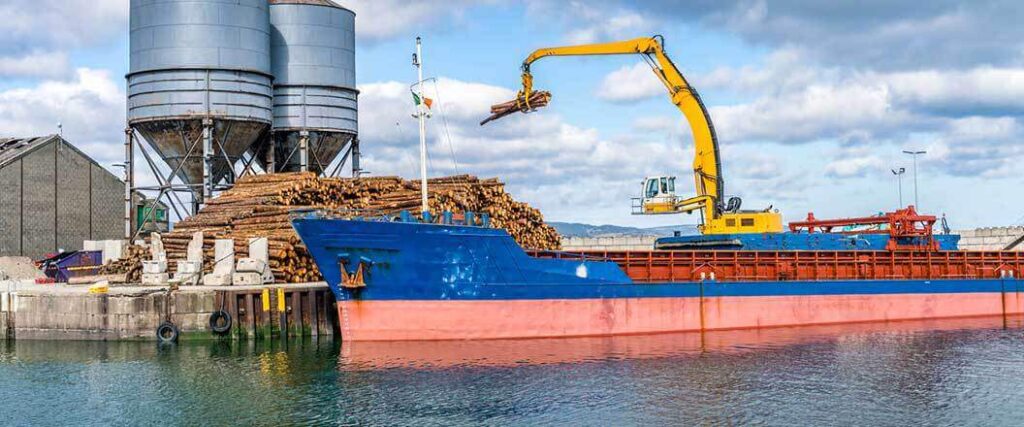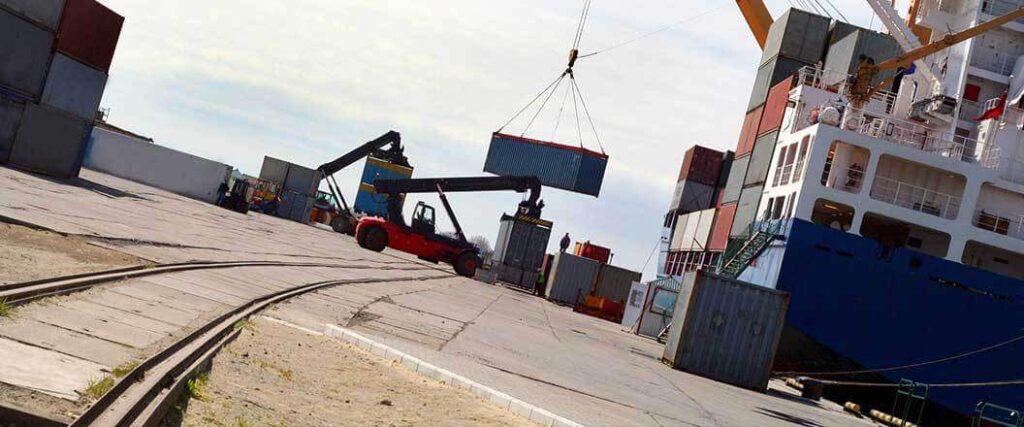Exporting to Ireland is a task performed by U.S. exporters in a variety of industries. Thanks to the great relationship between Ireland and the U.S., trade between the two countries occurs frequently. That said, there are many responsibilities that exporters must fulfill if they want to send their exports to Ireland successfully.
According to the International Trade Administration (ITA), exporting to Ireland requires adherence to European Union (EU) and Irish customs regulations. Proper documentation like summary declarations and single administrative documents must be included. Marking and labeling rules for packages must also be followed.
Businesses exporting to Ireland must abide by many other requirements in addition to these. We’ll show you what they are so you can follow each one accordingly.
Ireland and the U.S. have had excellent trade relations with one another for many decades. The U.S. is the second largest exporter to Ireland, with first place going to their local partner, the United Kingdom. In 2021, Ireland received $13.8 billion worth of U.S. exported goods. Ireland imports a variety of different products from the U.S. and other countries as well.
| Product | Amount Imported In USD |
| Planes, Helicopters and/or Spacecraft | $5.4 Billion |
| Packaged Medicaments | $4.14 Billion |
| Vaccines, blood, antisera, toxins and cultures | $4.06 Billion |
| Computers | $3.7 Billion |
| Nitrogen Heterocyclic Compounds | $2.69 Billion |
U.S. service imports are another popular commodity amongst Irish importers. According to statistics from 2020, the U.S. exported $74.8 billion worth of services to Ireland.
Some of the exported services include:
Thanks to the diverse demand in the Irish market, there are many export opportunities for U.S. entrepreneurs in various industries.
Another great country near Ireland that you can export to is the UK. Check out our UK exporting guide to discover how you can send goods to this important ally and trading partner.
The U.S. and EU entered into the United States and European Union Trade Agreement Regarding Tariffs on Certain Products. Since Ireland is an EU member state, U.S. exporters can send certain exports to Irish companies and other buyers at a preferential tariff rate.
That said, the benefits of this agreement are limited for U.S. exporters and Irish importers. Under this trade agreement, the EU has only eliminated tariffs for certain frozen and live lobster products.
Therefore, U.S. exporters will only benefit if they’re in the seafood industry and are sending lobster products defined in the agreement to Ireland.

Despite the good trade relations and an active trade agreement between the U.S. and Ireland, there are certain barriers to trade that U.S. exporters will have to be on the lookout for. Some of these barriers are caused by EU protocols while others are barriers unique to Ireland.
Regardless, it’s important for exporters to know what to expect when sending goods to the Emerald Isle.
Conducting business in Ireland can be difficult for many U.S. exporters due to trade barriers created by EU import regulations that Ireland follows. Fortunately, the United States Trade Register keeps track of trade barriers that U.S. exporters might have to deal with.
These barriers include:
While these trade barriers can make exporting to Ireland difficult, it won’t be entirely impossible. Exporters can overcome them by following the applicable regulations for their commodities as carefully as possible.
All EU countries, including Ireland, are subject to the same import restrictions. In addition to imports restricted by the EU, the Irish government has established its own unique list of restricted imports.
Products that are prohibited or restricted by the EU have one of the three following codes:
When businesses export to Ireland, they’ll need to check for these codes. Exporters will then need to review the Irish government's list of prohibited and restricted goods.
The main categories of prohibited and restricted items in Ireland include:
Ireland’s Office of the Revenue Commissioners keeps a full list of restricted/prohibited products and services that fit within these categories. It’s important to note that goods restricted by the EU and Irish government can still be exported to Ireland.
However, exporters will have to obtain one or a combination of:
Checking these EU and Irish regulations will help exporters determine if their goods and services can be sent straight to Ireland or if further steps have to be followed.
Another great European country to conduct business with is Norway. Our article on exporting to Norway will show you how to send goods to this valuable trading partner.

Any goods that an exporter sends to Ireland will have to be accompanied by the correct documentation. Irish customs authorities require a few different documents to accompany exports arriving in the country.
These documents are:
Each of these documents required for export contains valuable information and must be submitted at the appropriate time.
Summary declarations must be filed with Irish customs authorities when an export reaches Ireland. This document can be filed from the day it arrives to the following business day. While the exporter should fill in the information on the summary declarations, Irish customs allows numerous parties to file them on the exporters' behalf.
These parties include:
Summary declarations can be provided by Irish customs authorities. That said, Irish customs will allow other documents to be used as declarations as long as they provide information that identifies the goods thoroughly.
Summary declarations can only be submitted to Irish customs successfully if they have an economic operator registration and identification (EORI) number accompanying them. Any company outside of the EU that exports to EU member states will need this number to identify themselves.
The single administrative document is the Irish importer’s responsibility to file. This document contains information about the goods and their movement into the internal market of Ireland. Similar to summary declarations, multiple parties are able to submit a single administrative document to Irish customs.
These include:
Both summary declarations and single administrative documents are applicable for exports going to Ireland and other EU member states.
BOLs and commercial invoices are standard documents used in trade. Ireland, however, has a few unique rules regarding these documents. In the case of BOLs, Irish customs authorities require this document to accompany exported goods. Commodity exports transported by air should have an airway bill instead of a BOL.
Irish customs rules for commercial invoices are particularly tricky. This document has no required format, but must include extremely specific information about the shipment arriving in Ireland.
This information should include:
Description of the goods must also be specific and include:
Exporters should make sure that the commercial invoice format they choose has enough fields to fit this information.
Like BOLs and commercial invoices, certificates of origin are standard documents used in international trade. Nonetheless, Ireland's requirements for them are largely different compared to other countries.
When a product is of U.S. origin, Irish customs authorities will not require a certificate of origin to accompany the shipment. However, a certificate of origin will be required if a U.S. company imports and then re-exports products to Ireland. Goods that Ireland imposes quotas on cannot be exported to the country.
Before exporting commodities to Ireland, check out our article on how to find a Schedule B number for your export.

Ireland requires certain paperwork to accompany exported goods that could cause possible harm to the environment. The environmental regulations in Ireland can vary based on the type of export being sent.
Irish environmental regulations apply to the following:
There are also two environmental regulatory programs that U.S. exporters will need to be aware of when shipping commodities to Ireland that pose a danger to the environment.
Exporters sending goods that fall under the jurisdiction of these regulatory programs will need to follow them explicitly.

Before a U.S. exporter arrives at a business agreement with an Irish buyer or sends goods to Ireland, they should consider obtaining a ruling on their goods from Irish customs authorities. Obtaining a ruling from Irish customs will give the exporter valuable information about their shipment.
This includes:
To make a request, the exporter will need to provide specific information on their product such as what the material is made from. Irish customs won’t make binding decisions upon review of the commodity description. However, the ruling will likely be accepted if Irish customs authorities find that it corresponds precisely with the exported commodities upon arrival in Ireland.
Germany is a country with many economic opportunities for U.S. exporters. Learn how to take advantage of them with our article on exporting to Germany.
The packages and pallets holding commodities that have been exported to Ireland will need to adhere to strict labeling and marking requirements. Marks and labels allow Irish customs authorities to better identify what is within them. They also ensure that the exported commodities are being handled correctly.
Because Ireland is an EU member state, there are general marking and labeling requirements that exporters will have to abide by. Certain exports will require a corresponding and mandatory mark or label. There are also voluntary marks and labels that exporters can use at their discretion.
Mandatory marks and labels include:
Voluntary marks and labels include:
Before sending an exported shipment to Ireland, exporters should check their goods and determine if any of the marks or labels should be placed on the packaging of their shipment.
In addition to EU requirements for marks and labels, exporters will need to include Irish-specific marks and labels for their shipments. Most commodities that are exported to Ireland don’t need a country of origin label or marking. However, there are a few exceptions to this rule.
These exceptions include:
Ireland’s marking and labeling is less extensive than the EU's, but these regulations should still be followed with the same amount of caution and care.
When exporters send hazardous substances to Ireland they’ll be required to follow the Classification, Labeling and Packaging (CLP) regulation. Following the CLP regulation will require exporters to complete three different steps. The first step will be to accurately classify the hazardous substances being exported.
Classifying the hazardous substances is done by accessing Annex VI of the CLP regulation. Within Annex VI, exporters can access the harmonized code that corresponds with their hazardous substances. If an exporter can’t find a harmonized code for their substance, they’ll have to self-classify their goods instead.
To self-classify substances, exporters will need to identify if their substances have the following hazards:
Hazardous mixtures will always need to be self-classified before being exported. The reason for this is that mixtures don’t have harmonized classifications assigned to them. Fortunately, self-classifying mixtures is similar to self-classifying substances.
To self-classify mixtures, the following data will need to be considered:
The next step exporters will need to complete is labeling. According to CLP regulations, all packages carrying hazardous substances or mixtures will need to have a label placed on at least one surface of the package.
The label should contain the following information:
Finally, exporters will need to ensure that their exported shipment of hazardous substances or mixtures meets the CLP regulation for packaging.
Exporters will need to do the following to complete the packagin step:
Hazardous substances and mixtures meant for use by the general public should also have fastenings that are child proof. Additionally, tactile warning signs will need to be placed on the packaging too.
France is a country in the EU that’s great to conduct business with. Our article on exporting to France will provide you with the knowledge you need to send goods to the land of free men.

Once U.S. exporters have complied with all of the relevant regulations, they can now choose an Irish port they want to send their commodities to. We’ve provided information about the most popular ports for shipments to be sent.
Ireland's busiest port, by far, is the Port of Dublin. Located in the eastern part of the country, it receives about 50 percent of maritime traffic. The Port of Dublin has an impressive amount of infrastructure that allows it to handle this much freight.
This infrastructure can accommodate:
The amount of freight that the Port of Dublin was able to process in the first half of 2022 was extremely impressive. During this time, 18.6 million tonnes of cargo carried by 3964 cargo ships came through the port.
Another Irish port where U.S. exporters can send their commodities is the Port of Galway. This port is located in the western part of Ireland and also handles an impressive amount of freight. Every year around 300 ships carrying 1,000,000 tons of cargo come through the port.
The size of the Galway port is impressive in its own right. There are two 8000 m2 warehouses that are managed by the harbor company operating the port. A large 10-acre yard provides additional storage space for cargo containers.
The Port of Shannon Foynes is another excellent place where U.S. exporters can send their commodities. Located south of the Port of Galway, this port is located a bit further inland along the Shannon river. On an annual basis, 300 ships carrying 7,600,000 worth of cargo passes through Shannon Foynes.
There are also six berths located at the port:
This port is often visited by container ships and oil tankers. Regardless of what cargo U.S. exporters are sending, there are plenty of ports in Ireland that will be able to handle their shipment.
Understanding export controls is imperative when sending commodities to other countries. Our article on export control basics will explain how this system works.
Cargo Export USA can be your guide when exporting to Ireland. We can do this by providing you with a wide range of services that exporters from all industries can use.
Our team has a great amount of experience helping exporters send their goods to distant countries. If you’re ready to export, connect with us below or give us a call at (866) 941-8081 for more assistance.
We need to ship some gym equipment to a town outside Dublin Ireland.